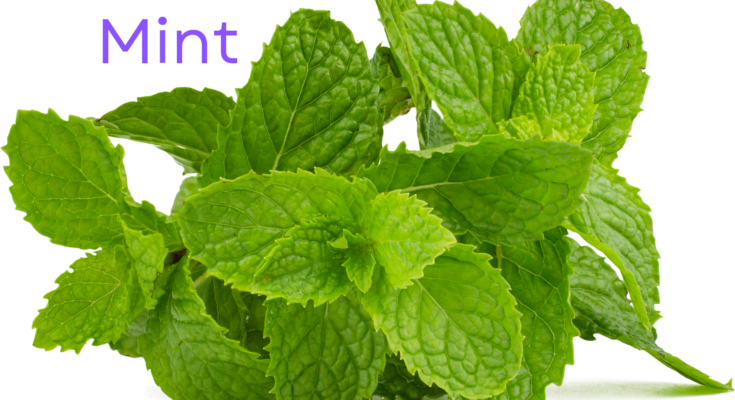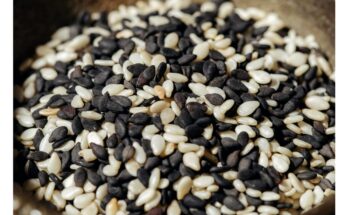Mint is a nutrient-rich herb, abundant in essential vitamins and minerals. Analysis of its leaves reveals that per 100 grams, they consist of 84.9% moisture, 4.8% protein, 0.6% fat, 1.9% minerals, 2.0% fiber, and 5.8% carbohydrates. Mint is a great source of calcium (200 mg), phosphorus (62 mg), iron (15.6 mg), carotene (1620 µg), thiamine (0.05 mg), riboflavin (0.26 mg), niacin (1.0 mg), and vitamin C (27 mg). It also contains vitamins D and E, with a caloric value of 48 per 100 grams.
Widely used in Indian cuisine, mint is a perennial plant that grows up to 60 cm tall. Its stems are four-sided, and the oval-shaped, dark green leaves are about 5 cm long. The leaves are delicate, fragrant, and mildly bitter. Mint produces lilac-colored flowers in small clusters. Its leaves can be used fresh, in combination with other mild herbs, or as juice extracted from 7–10 grams of leaves.
Steam distillation of mint leaves and flowers produces a golden-yellow volatile oil, which contains about 50% menthol. The menthol, when crystallized, separates from the oil, leaving the remaining oil to be used as peppermint oil. This natural oil, containing 40–50% menthol and 50–60% dementholized oil, is widely used in confectionery and medicines.
Mint is highly valued for its medicinal properties. It acts as a stimulant, aids digestion, and helps relieve flatulence and spasmodic disorders. It is commonly included in stomach medications due to its digestive properties. Fresh mint juice is particularly effective in treating indigestion, biliousness, flatulence, colic, threadworms, and morning sickness. When combined with lime juice and honey, it becomes a powerful remedy. Additionally, mint tea, taken twice a day, supports digestion and promotes a healthy complexion.
Mint also helps treat diarrhea, with a mixture of its juice, lime juice, and honey offering excellent results. Its antiseptic properties make it a natural dentifrice, effectively killing odor-causing germs, strengthening gums, and preventing tooth decay and gum diseases.
For skin care, applying mint juice externally helps treat pimples, dryness, insect bites, eczema, and dermatitis.
In cooking, mint is indispensable, often paired with coriander for chutneys or used to flavor meats, fish, soups, stews, teas, and sauces. It enhances apple sauces, beverages, ice creams, jellies, and salads. Mint oil is commonly found in chewing gum, toothpaste, and pharmaceutical products.





I dugg some of you post as I thought they were very beneficial invaluable
You made several fine points there. I did a search on the subject and found mainly people will consent with your blog.
I’m often to blogging and i actually respect your content. The article has actually peaks my interest. I’m going to bookmark your site and preserve checking for brand new information.
I like this blog so much, saved to favorites.